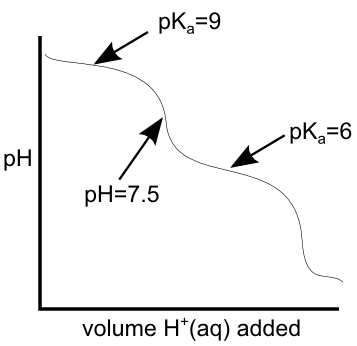Question from email:
"I'm having a bit of
trouble with polar bonds and figuring out whether a structure is polar or
non-polar. If you could give me a simplified explanation of this that would be
much appreciated because I've looked in the book multiple times and have watched
multiple YouTube videos and am still having trouble understanding this."
Polarity can be a bit tricky because we use the same terms ("polar", "dipole", "polarity") to describe both the properties of an individual bond and the properties of a molecule that contains a whole BUNCH of bonds, and they don't always feel like the line up.
First, let's look at bond polarity... Covalent bonds form when 2 atoms share electrons. When we are looking at covalent bonds vs. ionic interactions, we talk about sharing (covalent) vs. transfer of electrons from one atom to the other (ionic). If the 2 atoms have the same attraction for those electrons, they will share them and form a covalent bond (think about something like a Cl2 molecule). If one atom has a very strong attraction for an additional electron(s) and the other only has a very weak attraction to its outermost electron(s), then the electron(s) will be transferred from one to the other (think about something like CsF) and the resulting positive and negative ions will have a coulombic interaction just like any positive and negative charge.
What happens if the 2 atoms have different attraction for electrons, but not different enough to make those electrons transfer from one atom to the other? Then we have a polar covalent bond. Think of a molecule like BrF... The outer electrons on the Br atom are pretty far away from its nucleus, and the outer electrons of the F are pretty close to its nucleus, so the F nucleus attract those outer (bonding) electrons more strongly than the Br, but they both attract electrons strongly enough that it's energetically more favorable to share the electrons in a covalent bond rather than transfer electrons to make an ionic interaction. At the same time, the electrons that form the covalent bond probably spend more time near the "F" end of the bond, so that end of the bond will (on average) be slightly more negative than the "Br" end of the bond. That's a polar covalent bond.
We usually decide whether an interaction is pure covalent, polar covalent, or ionic by looking at some combination of electronegativity, ionization energy, and electron affinity, so it's a good idea to review those trends on the Periodic Table.
OK, so what about molecular polarity? First of all, if a molecule does not have polar bonds then the molecule is not polar. Seems simple, but it's important to say it explicitly. If a molecule does have polar bonds, it might be polar. How do we decide?
If you're a "mathy" person, the quick answer is that polar bonds are dipoles, and dipoles are vectors, so if you look at all the bond dipoles in a molecule and add the vectors together, if the vectors don't all cancel each other out, you have a polar molecule and the residual bond dipole vector that's left after your vector addition is the molecular dipole.
If you're not a "mathy" person, that explanation might have made your head explode. Sorry about that. Let's try another route... Molecular polarity is sort of like a game of tug-of-war. Let's start with a simple linear molecule A-B-A, and let's assume that "A" is more electronegative than "B". That means that the A-B bond is polar, with the negative end toward "A" and the positive end toward "B". Polar bonds means we might have a polar molecule, but we need to dig a little deeper. The two A-B bonds are both polar, but they are equally polar and their polarity points in exactly opposite directions. It's like Thor having a tug-of-war with Thor... they would both pull really hard, but neither of them would win because they're equally strong and pulling in exactly opposite directions. (For a "real" example, look at CO2...)
What if we compare that to another linear molecule, A-B-C, where C is more electronegative than B, but less electronegative than A? Both bonds (A-B and C-B) are polar with the positive end pointing toward "B", but now they're not equally polar. Now it's a tug-of-war between Thor and Rocket Racoon. The molecule is polar with the negative end of the dipole on "A" and the positive end pointing toward "C". (For a "real" example, look at the cyanate or thiocyanate ion...)
When we move to more complex molecules, the same idea holds, it just takes a little more imagination to visualize the 3- or 4- or 5- or 6-direction tug-of-war. One thing to look for is lone pairs... they don't always mean a molecule is polar, but they should make you check a little more closely. If you want to play around with some interactive visualizations, try:
https://phet.colorado.edu/sims/html/molecule-polarity/latest/molecule-polarity_en.html















